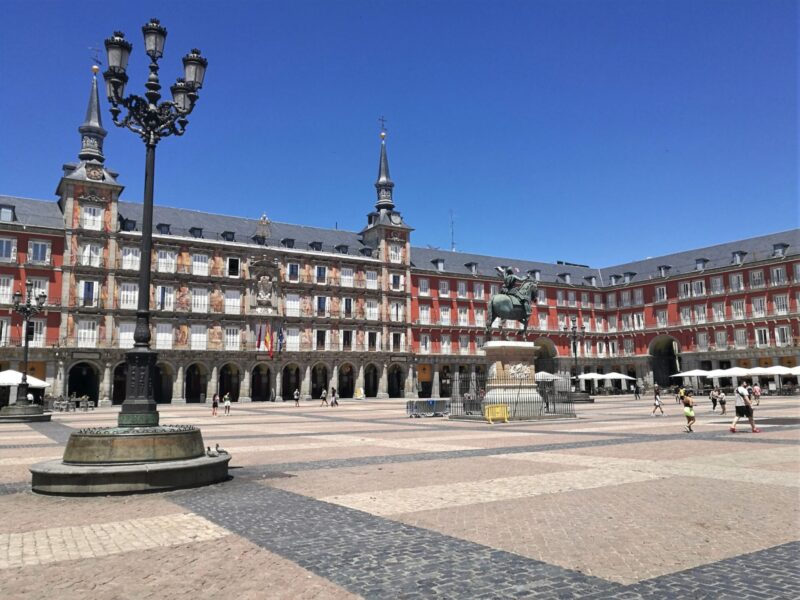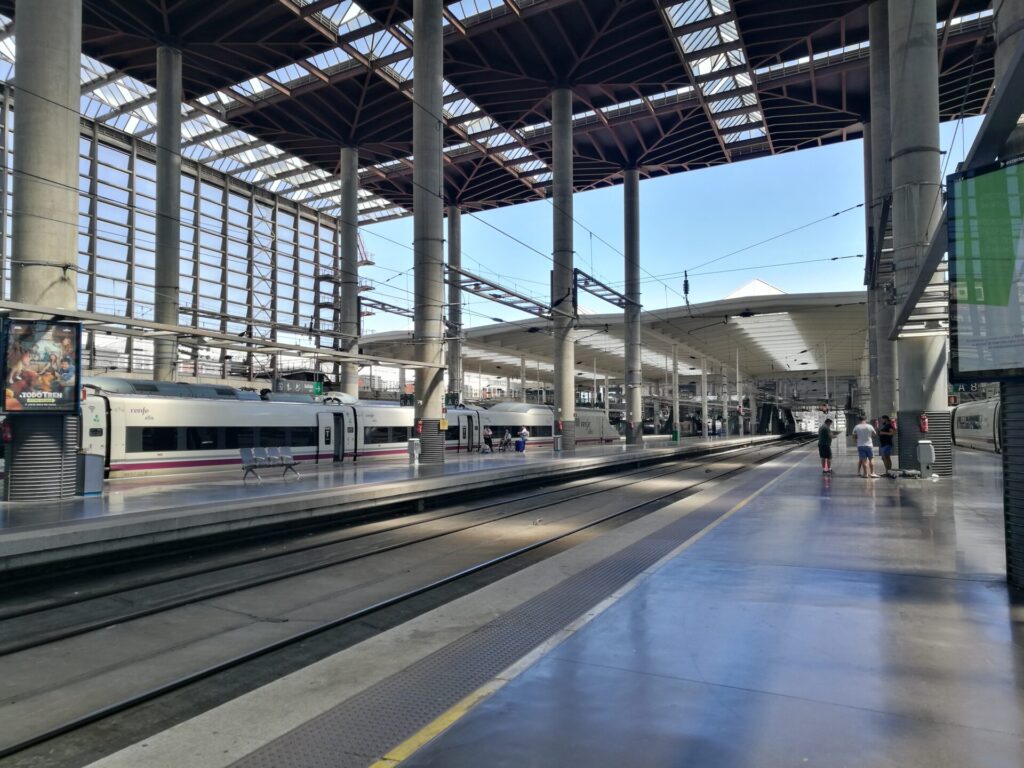Spain
Welcome to our collection of Spain travel guides. We explore a country full of sprawling cities with inspiring architecture, friendly locals, superb local cuisine, bustling markets and beautiful coastal towns. With so much regional diversity, Spain is the country that keeps on giving.
Whether you’re interested in seeing some of the most unique architecture in Europe, want to relax on stunning beaches or spend your days sipping great wine alongside excellent food, then Spain can fulfil your desires. With numerous cities to explore and tons of coastal towns and villages, Spain caters to both city breaks and summer holidays. Experience the full extent of the country and you will not be disappointed. Down south, in Malaga, the sun shines, on average, 320 days a year, enjoy the beach, it’s always summer there. Head north to San Sebastian, where lush green hills line the coastal city and you’ll be treated to some of the best food in the world. It doesn’t matter if you choose Malaga, San Sebastian, Barcelona, Madrid or Valencia, where ever you go in Spain, the next place will be different from the last and the laid back Spanish charm will keep you coming back.
Spain Travel Guides - Where Do You Want To Go?
Top Spain Travel Tips
How to get to Spain
Flights – Spain has long been one of the most popular holiday spots in Europe, whether it’s sandy beaches you seek, buzzing nightlife, metropolitan cities or quaint old towns, Spain has it all. As a result, numerous airlines serve Spain and its many cities. Madrid serves the majority of international flights that cater to the outside of Europe, but Barcelona also has some international flights too. Spain’s national carrier, Iberia operates flights across the globe including to and from North and South America, Africa, all over Europe and Asia. European budget airlines such as Easyjet, Ryanair, Norwegian, and Vueling also operate flights in and out of most of Spain’s major cities and many of the most popular tourist destinations in the country. All in all, Spain is very well connected to the rest of Europe and the world by air, so getting there shouldn’t be a problem for most. We recommend using Skyscanner for checking and booking flights. You can use tools such as the flight tracker to track the price of a flight and book it at its cheapest, a big help for any avid travellers!
Trains – Spain has an excellent train network, which connects most of the major cities to Madrid and each other. As for international trains, these operate in and out of Madrid and Barcelona’s main train stations. From Madrid, you can get to France or Portugal and from Barcelona to France. The extensive European train network enables passengers to make connections in France for further travel into Europe. Spain’s high-speed trains are generally very comfortable, spacious, fast and smooth, making train travel an enjoyable experience. We use Trainline to book our European trains where possible, as it is exceptionally user friendly and covers most train services throughout Europe.
Bus – Getting into Spain by bus is probably one of the least common modes of transport. However, despite the long journey times, bus travel can be an incredibly inexpensive way to travel into Spain and throughout Europe. As an example, a bus trip from Paris to Madrid will take around 16 hours. Several companies operate long-distance bus routes throughout Europe and Spain, however, we think Flixbus is one of the best, as they have tons of routes and an easy-to-use website that you can book through.
Useful tips for getting around Spain
Spain is such an amazing country and exploring its many cities, towns and rural regions are completely worth it. We know that to do that, you need to know how to get around so here are our top tips for getting around Spain with various types of transport:
Trains – Trains in Spain are great. They generally run on time, are clean, modern and spacious and best of all, they’re quick. There are high-speed trains that cover long distances quickly, regional trains which cover mid-long distances but slower, with more stops and local trains which tend to cover a specific city or smaller area. The main train operator in Spain is Renfe, but some others operate specific lines or in certain areas. High-speed rail fares are similar to airfares in that they change in price according to demand and peak or off-peak times, so booking in advance is always highly recommended to get the best price. Local trains tend to have set prices that differ depending on the region (we cover prices in more detail in our city-specific guides). Taking the train to get from one city to another is a great way to get around in Spain and is the perfect opportunity to see more of the country in a relaxed way. You can book high-speed trains in advance via Trainline, which will save money and time while you’re away.
Bus – Buses are probably the most inexpensive way to get around Spain via public transport, as they are in many countries. However, they also take the longest. In any case, most towns and cities are connected by a bus route and bus travel is safe and reliable throughout Spain. The majority of bus drivers will also speak English. We recommend using Flixbus for long-distance bus journeys throughout Spain to get the best price
Car – The excellent train and domestic flight networks in Spain mean that driving between cities and regions isn’t the most cost-effective or fast way of getting around Spain. However, it can be a good way to see areas that you might not normally see by using the public transport network. Roads in Spain are generally of good quality and car-hire companies are common throughout the country. In Spain, cars drive on the right-hand side of the road and the speed limit on motorways is between 100 kph and 120 kph. Motorways have tolls, so driving long distances across the country via the motorway can prove costly
Domestic flights – There are lots of domestic flight carriers in Spain, making this a convenient and quick way to get from city to city. Alongside the national carrier, Iberia, internal flights are also operated by budget airlines Ryanair and Vueling. Although we would recommend travelling internally in Spain by train where possible, domestic flights connect some cities in under an hour, that would take several by train, and for half the price, so it’s easy to see why opting for a quick flight is so popular. Check Skyscanner to see the various domestic flight options throughout Spain
Local language and phrases in Spain
The language in Spain is Spanish. Being a popular tourist destination, English is also widely spoken in many areas, particularly in places catering to tourists. There are some regional dialects in Spain but knowing some basic Spanish words and phrases will get you by. Some useful Spanish phrases are:
Hello – Hola
Bye – Adiós
Thanks – Gracias
Please – Por favor
Yes – Sí
No – No
Excuse me, where is the WC? – Disculpe, dónde está el baño?
Spain travel tips
– Spain is a safe country to travel in and is suitable for all travellers. As with any popular tourist destination, be wary of your personal belongings at all times and watch out for scams
– Spain uses the type C plug, with 2 round pins which is used across most of Europe
– Dial 112 in an emergency when in Spain
– The currency in Spain is the Euro (€)
– Tap water is generally safe to drink in Spain although in some regions people choose to drink bottled water because the water can have a certain taste or odour. See our destination specific guides for more info
– We recommend using SafetyWing for travel health insurance in Spain. We always recommend getting travel health insurance for any trip
This site uses affiliate links. When you click on a link and purchase an item, we may be compensated on qualifying purchases. However, this is at no extra cost to you. See our affiliate disclosure for further information.
Spain Travel Articles
Spain walking tour videos
See all of our Spain walking tour videos, and more destinations, on our Youtube Channel. All of our walks are designed to take in the best landmarks in that area and help you discover a sense of what that place is really like. We’ve also put together a handy Google Map of each route that you can download to your phone to follow




